Spirits producers eye growth in the Middle East
By Nicola CarruthersThings are moving on apace in the Middle East, with producers of alcoholic and non-alc brands targeting growth in the region.
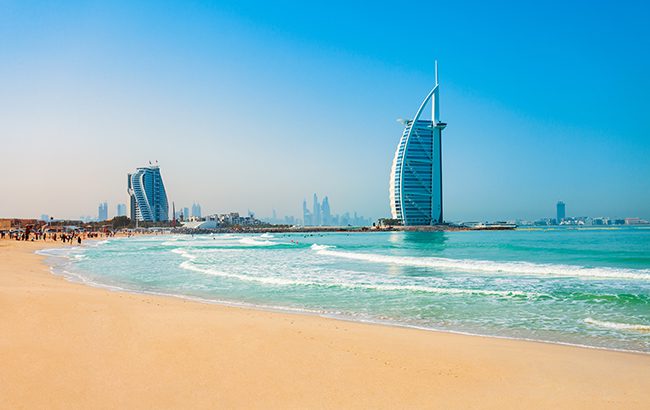
*This interview was originally published in the July 2025 issue of The Spirits Business magazine.
All eyes were on the Middle East this year as the region welcomed its first dedicated bar and beverage trade show in April.
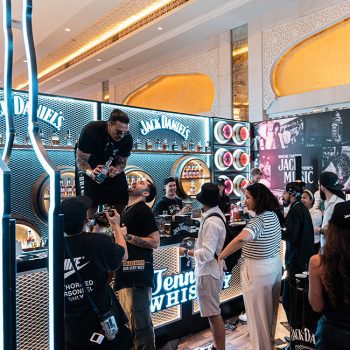 The Gulf Bar Show (GBS) was hailed a success by its organiser, Hugo Goncalves, who noted the presence of major producers (Tito’s, Brown-Forman, and Diageo were among some of the big names). “It really shows the excitement that exists in the Middle East right now around the spirits industry,” says Goncalves. “The UAE is a very exciting market, especially Dubai, and you have probably some of the best operators in the world present there. The bar scene is evolving day to day, which is great to see.”
The Gulf Bar Show (GBS) was hailed a success by its organiser, Hugo Goncalves, who noted the presence of major producers (Tito’s, Brown-Forman, and Diageo were among some of the big names). “It really shows the excitement that exists in the Middle East right now around the spirits industry,” says Goncalves. “The UAE is a very exciting market, especially Dubai, and you have probably some of the best operators in the world present there. The bar scene is evolving day to day, which is great to see.”
In terms of the trends being seen in the region, Goncalves notes “huge demand for agave”, while whisky and gin are also performing strongly. There was a major presence from agave brands at GBS, with the likes of Casa Maestri, Don Julio, Mijenta, Komos, Barajas, Teremana and Patrón taking part in the event.
“There is significant potential for premiumisation in the spirits market in the Middle East, particularly in the UAE,” says Russell Menezes, IWSR research director, Africa and Middle East. “Categories such as whisky, vodka, and the increasingly popular Tequila have experienced strong growth.
“This trend has been largely driven by the influx of expatriates, which has expanded the consumer base and introduced new preferences. While the majority of volume consumption still occurs in the standard and value segments, there is a clear opportunity for new brand entrants to establish themselves – especially in whisky, vodka, and Tequila. Consumers in this region are generally open to experimenting with new brands, provided the pricing remains competitive in the standard segment. Brands must strike a balance between quality and affordability to gain traction.”
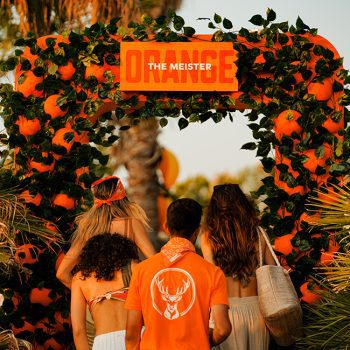
Total spirits volumes in the Middle East grew by 1% last year, according to IWSR data, with the sector expected to post a compound annual growth rate (CAGR) of 2% between 2024 and 2029.
Whisky remains the biggest category in the Middle East, followed by vodka, aniseed (such as arak, ouzo and raki), gin, and brandy. Whisky volumes were stagnant last year, with vodka and gin both up by 1%, and aniseed down by 1%. Brandy saw a 2% volume drop in 2024. Apart from vodka (which is forecast to be flat), these four categories are expected to grow their volumes slightly over the next five years.
While it only holds a 2% share of total spirits in the region, Tequila reported 16% volume growth last year with a CAGR of 3% being predicted (2024-29).
The Middle East is one of the fastest-growing regions for Mast-Jägermeister, led by Turkey and Dubai/UAE. Lewis Jones, the company’s vice-president of Middle East and Africa, says it’s a region where the company has “dedicated greater investment and focus over recent years having seen great potential and growth coming out of the pandemic”.
The company’s flagship herbal liqueur entered the Middle East in 2005, debuting in Jordan, followed by Dubai/UAE the following year. “Since then we have steadily launched into new markets across the region, and continued to introduce more products while also investing in our brand there,” says Jones.
Teremana Tequila, in which Mast-Jägermeister owns a stake, was also launched in the region last year in Dubai. Travel retail is another important channel for the company, which has “invested in prominent activations for the launches of both Teremana and Jägermeister Orange in Dubai Duty Free with great success for each”, according to Jones.
Strong performance
For the world’s biggest-selling vodka brand, the Middle East business is “performing strongly” says John McDonnell, managing director, international. “In domestic and travel retail in the region, Tito’s Handmade Vodka is available in every market where alcohol sales are permitted (except for Qatar domestic and Egypt domestic, where we are still working on distribution opportunities).”
He also spotlights “strong growth” for the brand in countries such as Turkey and Jordan. In travel retail, an important channel for spirits brands in the region, McDonnell says Dubai, Qatar, Abu Dhabi and Istanbul have become key transit hubs.
For Spiribam, which owns rum brands such as Chairman’s Reserve and Rhum Clément, the focus is on Dubai, Abu Dhabi, and Lebanon. The business is hoping to push agricole rum in the Middle East. Spiribam’s export director, Benoit de Truchis, also describes Qatar as an interesting market, with many hotels and business people travelling through. Dubai’s popularity with travellers also makes it an important market for Spiribam, which aims to host masterclasses to showcase its agricole rum portfolio to bartenders.
There is also potential for non-alcoholic brands in the region due to certain countries strictly prohibiting alcohol, including Saudi Arabia, Kuwait, Libya and Yemen.
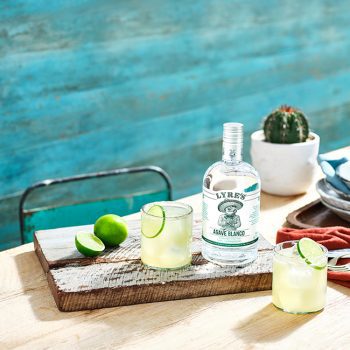
In 2021, alcohol-free ‘spirits’ producer Lyre’s debuted in eight countries in the Middle East, including the UAE, Saudi Arabia, Oman, Kuwait, Iraq and Jordan. The company’s main territories are the UAE and Saudi Arabia, with the former having a “really developed food-and-beverage environment, according to Sudera Fernando, the brand’s business development manager for Middle East and Africa.
Lyre’s is the category leader in the Middle East, where it offers five variants. The company has focused on premium on-trade venues, pushing the product in cocktails, but there are ambitions to expand into retail once it has dominated bars. The brand’s top performers include its London Dry Spirit, Italian Spritz, American Malt, and its sparkling wine alternative.
Fernando says the aim is to also bring the brand’s Tequila alternative, Agave Blanco, to the Middle East in the coming months to capitalise on the popularity of agave spirits in the region.
Market challenges
For spirits producers operating in the Middle East, there are numerous regulatory challenges. There are also major limitations when it comes to the advertising and marketing of alcohol in many Middle Eastern markets, which McDonnell at Tito’s calls an “ongoing challenge”.
The IWSR’s Menezes says: “Many countries in the region, especially those with strong Islamic governance, have strict regulations or outright bans on the sale and consumption of alcohol. This limits market access and distribution channels significantly. Even in more liberal markets, like the UAE, marketing and branding must be carefully tailored to respect local norms and avoid backlash.
“Import restrictions, high tariffs, and complex licensing requirements can make distribution costly and logistically challenging, especially for new entrants. The hospitality sector, including bars, restaurants, and hotels, is a key driver for spirits sales. In some markets, however, these venues are limited or are heavily regulated, reducing opportunities for brand visibility and consumer engagement.”
In 2023, Dubai temporarily suspended the 30% import duty on alcohol sales as a trial measure to boost tourism, but as of 1 January 2025, the tax has been reinstated.
Goncalves says this move helped to boost off-premise sales but “volume has kind of stayed the same”. In the UAE, Goncalves says the number of licensed shops that sell alcohol has “increased dramatically in the past three to four years” as the result of a growing population, with more people moving to Dubai and the UAE in general. He says the tax cut made alcohol more accessible, but even since it was reintroduced, people have continued to indulge in booze.
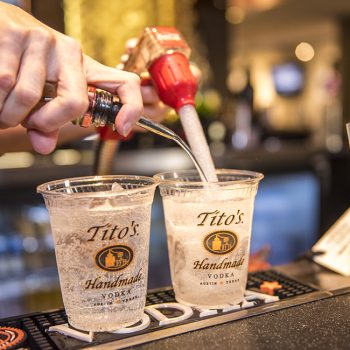
In terms of the major barriers to growth in the region, Tito’s notes that Bahrain and Oman were “slightly down” due to the repositioning of military troops in the region. He also says “conflicts and instability in some markets in the region continue to be a challenge”, alongside the lack of distributors operating in the region.
Extensive portfolio
Like McDonnell, Goncalves says the main issue for spirits brands is “how to get to the front of distributors and hospitality decision makers”. He also notes a lack of investment in trade advocacy in the market. “The main distributors have a very extensive portfolio. So for you to gain market share, you have to be invested in the market.
“You need to have a presence here, and need to be educating the trade, which is something that we don’t see as much as we used to perhaps 10 or 15 years ago, where you had global and local brand ambassadors going to the trade and talking about the product and showcasing their USPs.”
To comply with strict alcohol regulations in the Middle East, Lyre’s has adapted the recipe for some of its range to ensure its alcohol content is less than 0.01% ABV (in the EU the norm is below 0.05%). “We really see this market as a strategic one, with good potential, so Lyre’s has spent years developing its products to ensure they were compliant with the Middle East regulations,” Fernando explains.
He notes that the non-alcoholic ‘spirits’ sector remains underdeveloped in the Middle East, where alcohol-free beer is more prevalent, but Lyre’s is working on building the category. When it comes to non-alcoholic ‘spirits’, Lyre’s has a 90%-95% market share in the premium on-premise in the Middle East, Fernando notes, with the brand experiencing an average growth of 30%-40% every year.
He believes it’s a growing category, with more brands noticing the opportunities in the region: “In the past six to 12 months, other brands have come into the market [such as Tanqueray 0.0%, Gordon’s 0.0%, and Ceder’s]. I’m really happy about it because we were the only brand that was driving the category, and convincing the operators about the potential of the non-alcoholic category. But it’s good to have other brands so that we’re not alone. You know, if Diageo can convince another bar manager about this category then they might use our vermouth [alternative] or Amaretti.”
While the market might be complex, there is plenty of opportunity in the Middle East for spirits brands that are willing to put their time and money into the area, and with next year’s Gulf Bar Show (7-8 April) set to be bigger than the last one, it’s an exciting time for the region.
Related news
Desi Daru features at Sushisamba
